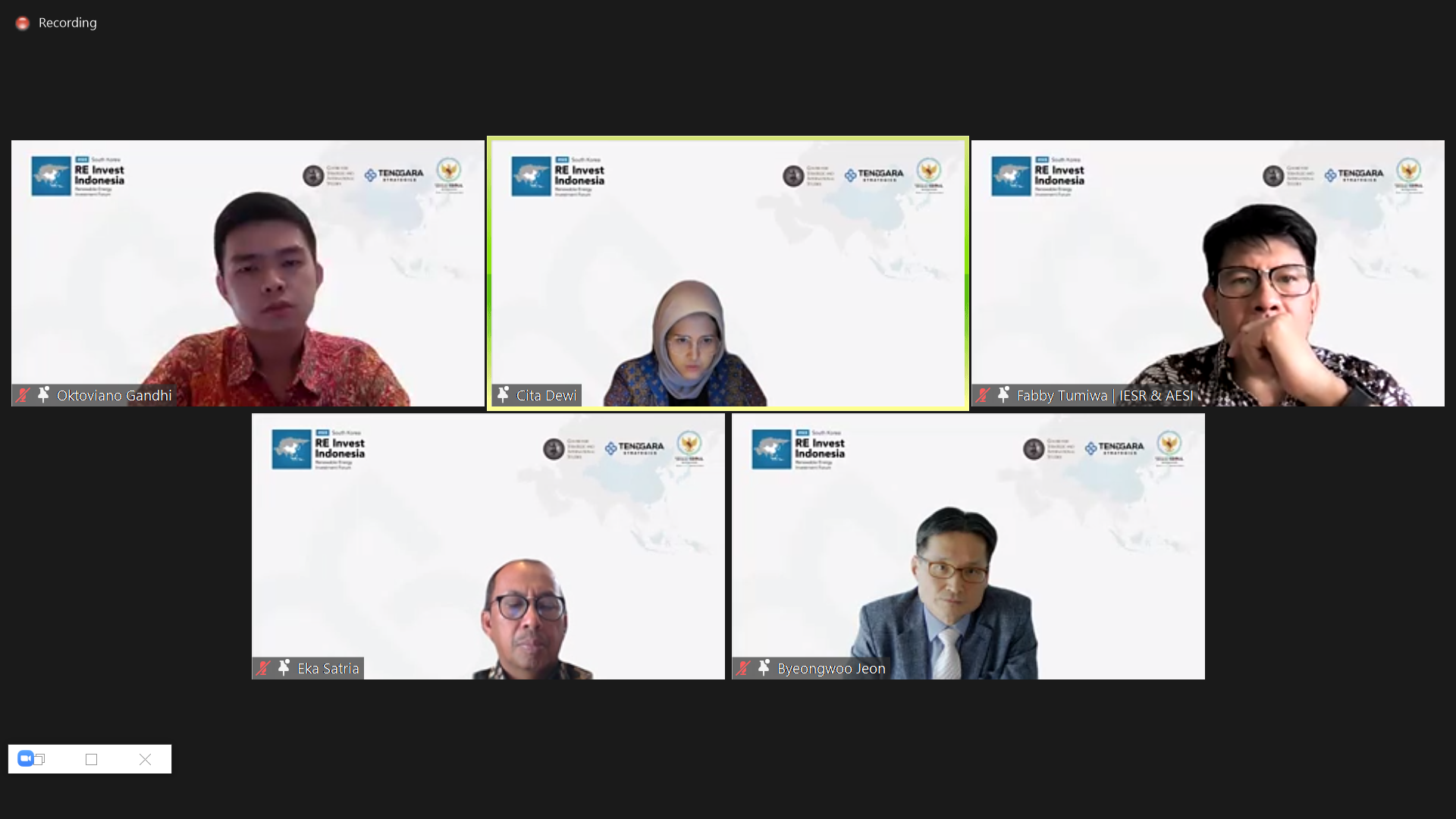Jakarta, 7 April 2022 – Located on the equator, Indonesia is blessed with abundant yet (unfortunately) untapped solar energy potentials. The Institute for Essentials Services Reform’s study titled, “Beyond 207 Gigawatts: Unleashing Indonesia’s Solar Potential” shows that based on land suitability there are 3 – 20 TWp solar potentials that may generate power up to 4,7 – 27 TWh annually. The huge potential is sadly not followed by proper utilization. The MEMR noted that until the end of 2021 total PV capacity in Indonesia is only around 200 MW.
Fabby Tumiwa, the Chairman of Indonesia Solar Energy Association and the Executive Director of the Institute for Essential Services Reform, during the South Korea Renewable Energy Investment Forum, said that the solar market outlook looks promising especially since the end of 2021 when PLN announced its recent Business Plan (RUPTL) in which it gives spacious slot for renewable energy.
“Solar becomes government focus in RUPTL to reach the 23% RUEN target in 2025 as well the net-zero emissions in 2060 or sooner. Approaches on various types of PV i.e floating, and rooftop need to be done through the regulation improvement,” Fabby said.
Eka Satria, CEO of Medco Power Indonesia, shares his perspective on the current energy transition happening in Indonesia. He believes that the success of energy transition should be driven by policy.
“Energy transition needs a different environment. We cannot just leave it to the market mechanism where people choose what kind of energy they want to have. Especially in the beginning, policy-driven action is needed,” Eka explained.
Eka added that the best practice in countries that have started the energy transition early is always initiated by the Government that sets up a policy to drive both energy providers and energy consumers to shift to renewable energy.
Byeongwoo Jeon, Managing Director of Global Business Department KEPCO KDN, shares his appreciation that renewable energy development in Indonesia is gaining traction yet a set of challenges still follow.
“Land acquisition is our number one challenge. In the area where energy demand is high, we usually experience land shortages to install solar PV,” he said.
Jeon also highlighted the complex process to get financing for renewable energy projects. The current regulation such as the required local content and the process to get PPA (power purchase agreement)happening in the lengthy process makes renewable projects hard to get financing.
Fabby Tumiwa added that besides the PPA process that should be shortened, consistent regulation is also important to give investors and the business sector confidence in planting their capital in Indonesia’s renewable energy projects.
“PLN must also implement the recent Ministerial Regulation number 26/2021 about rooftop solar customers to accelerate rooftop PV adoption,” he said.
The current MEMR’s regulation no 26/2021 about rooftop solar PV contains some improvements from the previous MEMR regulation no 49/2018 such as the 1:1 export-import tariffs, a longer reset period, and a shorter period to obtain approval for construction, but is not yet implemented by PLN though it is officially released by the Ministry of Energy and Mineral Resources as per January 2022.

